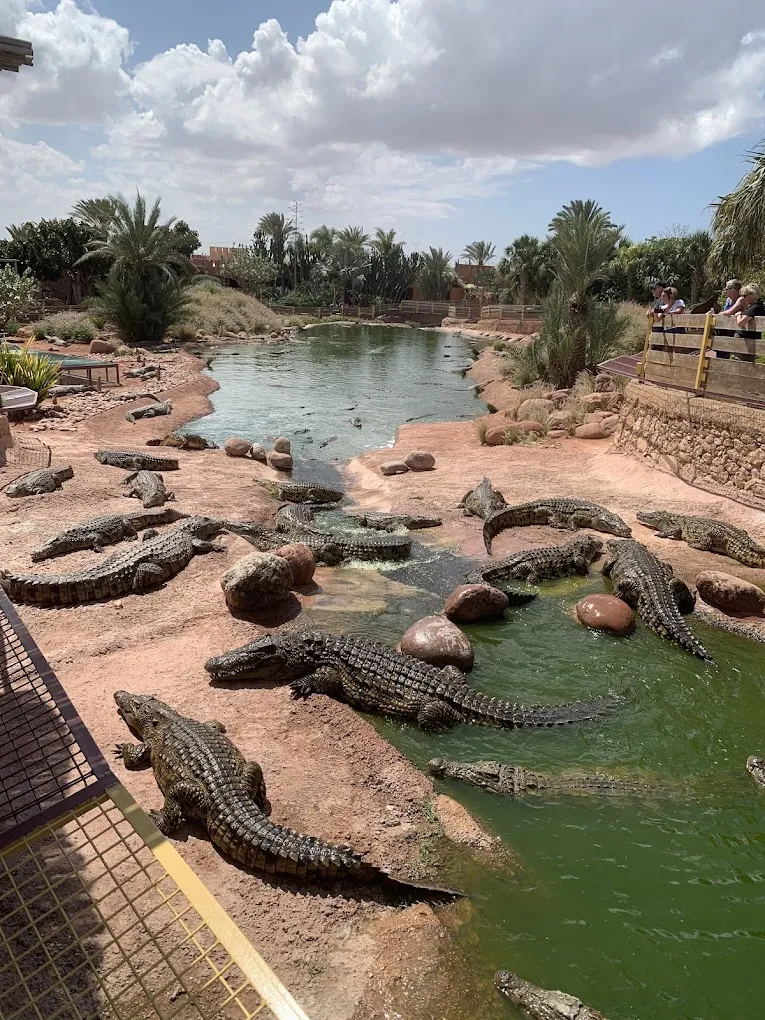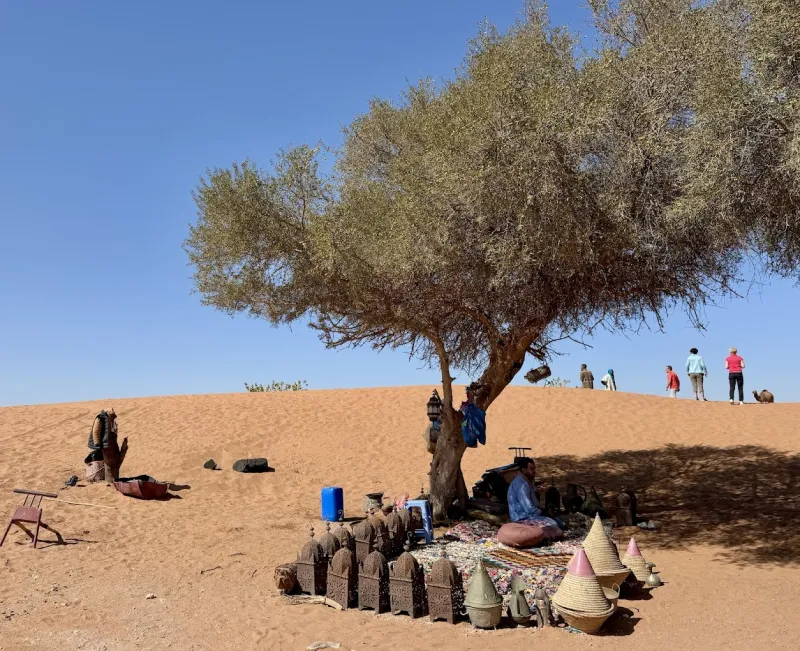Moroccan Architecture: A Fusion of Beauty, Culture, and History
22 أكتوبر 2024Moroccan architecture is renowned for its rich blend of influences, combining elements of Berber, Arab, Andalusian, and French design to create a unique and timeless aesthetic. From the grand imperial cities of Marrakech and Fes to the coastal forts and desert kasbahs, Morocco's architecture reflects the country's complex history and cultural diversity. Known for its intricate details, vibrant colors, and harmony with nature, Moroccan architecture has inspired awe and admiration for centuries.
In this article, we will explore the key elements of Moroccan architecture, its historical influences, and some of the most iconic structures that define this magnificent style.
Key Elements of Moroccan Architecture
1. Horseshoe Arches
One of the most distinctive features of Moroccan architecture is the use of horseshoe arches, which are found in mosques, palaces, and other important buildings. This type of arch, often adorned with intricate patterns and carvings, is a hallmark of Islamic architecture and is commonly seen in doorways, windows, and arcades.
2. Zellige Tilework
Zellige, or mosaic tilework, is a central element in Moroccan design. This traditional art form involves creating geometric patterns using small, hand-cut tiles made from colored clay. Zellige is used to decorate walls, floors, fountains, and even furniture, adding vibrant color and intricate detail to Moroccan interiors. The precise geometry and symmetry of zellige are reflective of Islamic artistic principles, which avoid the depiction of living beings and instead focus on abstract patterns.
3. Riad Design
A riad is a traditional Moroccan house or palace characterized by an inward-facing design. Riads are built around a central courtyard or garden, often with a fountain at the center. This layout provides privacy and a peaceful retreat from the bustling streets outside. The courtyard is typically open to the sky, allowing for natural light and ventilation, while the thick walls of the riad help regulate temperature in both hot and cold weather.
4. Muqarnas
Muqarnas is a form of decorative vaulting used in Moroccan architecture, especially in mosques and palaces. These honeycomb-like structures are made of intricately carved plaster or wood, creating a stunning visual effect. Muqarnas can often be found in domes, ceilings, and arches, where they add depth and complexity to the architecture.
5. Carved Plaster and Cedarwood
Moroccan buildings are often adorned with carved plaster (known as tadelakt) and intricately worked cedarwood. These materials are used to create ornate designs on walls, ceilings, doors, and columns. Cedarwood is particularly prized for its durability and beautiful grain, and it is often used to craft elaborate ceilings and wooden screens in mosques and palaces.
6. Colorful Courtyards and Gardens
Moroccan architecture places a strong emphasis on harmony with nature, and this is reflected in the design of courtyards and gardens. Known as riad gardens or Andalusian gardens, these spaces are often filled with lush greenery, aromatic plants, and flowing water. The use of water, whether through fountains or reflecting pools, adds a sense of tranquility and is symbolic of paradise in Islamic culture.
Historical Influences on Moroccan Architecture
1. Berber Influence
The indigenous Berber people of Morocco have had a profound impact on the country’s architecture, particularly in the design of desert kasbahs and mountain villages. Traditional Berber homes are made from local materials such as mudbrick and stone, designed to blend seamlessly with the natural environment. The use of earthen walls and simple geometric patterns in Berber architecture reflects a deep connection to the land.
2. Islamic Architecture
With the spread of Islam to Morocco in the 7th century, Islamic architectural principles became a dominant influence on the country’s design. Key elements such as mosques, minarets, and madrasas (Islamic schools) showcase the use of intricate geometric patterns, calligraphy, and arabesques. The focus on symmetry, unity, and the avoidance of figural representation aligns with Islamic teachings, resulting in highly abstract and symbolic designs.
3. Andalusian Influence
The Andalusian influence on Moroccan architecture is rooted in the historical ties between Morocco and Al-Andalus (Islamic Spain). When Muslim and Jewish refugees fled Spain in the 15th century, they brought with them elements of Andalusian architecture, such as horseshoe arches, zellige tilework, and lush gardens. This blending of styles is especially evident in the architecture of Fes, where many of the city's buildings exhibit a mix of Moroccan and Andalusian design.
4. French Colonial Influence
During the 20th century, French colonial rule left its mark on Moroccan architecture, particularly in cities like Casablanca and Rabat. French Art Deco and modernist styles were combined with traditional Moroccan elements to create a unique architectural fusion. The wide boulevards, grand squares, and public buildings constructed during this period reflect a European influence, while still incorporating Moroccan motifs and design principles.
Iconic Moroccan Architectural Landmarks
1. Koutoubia Mosque (Marrakech)
The Koutoubia Mosque is one of the most iconic examples of Moroccan Islamic architecture. Located in the heart of Marrakech, its towering minaret is visible from all parts of the city and has become a symbol of the city's skyline. Built in the 12th century, the mosque features classic horseshoe arches, intricate tilework, and a spacious courtyard. The design of the Koutoubia Mosque has influenced the construction of other famous mosques, such as the Giralda in Seville and the Hassan Tower in Rabat.
2. Bahia Palace (Marrakech)
The Bahia Palace, meaning "brilliance," is a stunning example of Moroccan riad architecture. Built in the 19th century, the palace was intended to be the most magnificent palace of its time. Its expansive courtyards, elaborate zellige tilework, and ornate cedarwood ceilings showcase the height of Moroccan craftsmanship. The palace’s lush gardens and fountains provide a serene oasis within the bustling city.
3. Al Quaraouiyine Mosque and University (Fes)
Founded in 859 AD, the Al Quaraouiyine Mosque and University in Fes is one of the oldest universities in the world. The mosque itself is a masterpiece of Moroccan-Andalusian architecture, with its horseshoe arches, carved woodwork, and expansive courtyard. As both a religious and educational institution, Al Quaraouiyine has played a vital role in the intellectual and cultural life of Morocco for over a millennium.
4. Hassan II Mosque (Casablanca)
The Hassan II Mosque in Casablanca is the largest mosque in Morocco and one of the most impressive in the world. Completed in 1993, it combines traditional Moroccan design elements with modern engineering. The mosque features a soaring minaret, which is the tallest in the world, and its location on the Atlantic coast allows for stunning views. Inside, the mosque is adorned with exquisite zellige tilework, marble floors, and carved cedarwood ceilings.
5. Ait Benhaddou (Ouarzazate)
The fortified village of Ait Benhaddou is a striking example of traditional earthen architecture. Located on the edge of the Sahara Desert, Ait Benhaddou has been used as a backdrop for many films, including "Gladiator" and "Lawrence of Arabia." The ksar (fortified village) features mudbrick kasbahs that blend seamlessly into the surrounding desert landscape, highlighting the Berber influence on Moroccan architecture.
Conclusion
Moroccan architecture is a reflection of the country’s rich history, cultural diversity, and artistic traditions. From the grand mosques and palaces of the imperial cities to the humble yet beautiful kasbahs of the desert, Morocco’s architecture tells the story of a nation that has been shaped by a wide range of influences. Whether you’re exploring the bustling medinas or wandering through the tranquil courtyards of a riad, the beauty and intricacy of Moroccan architecture will leave a lasting impression on any traveler.




